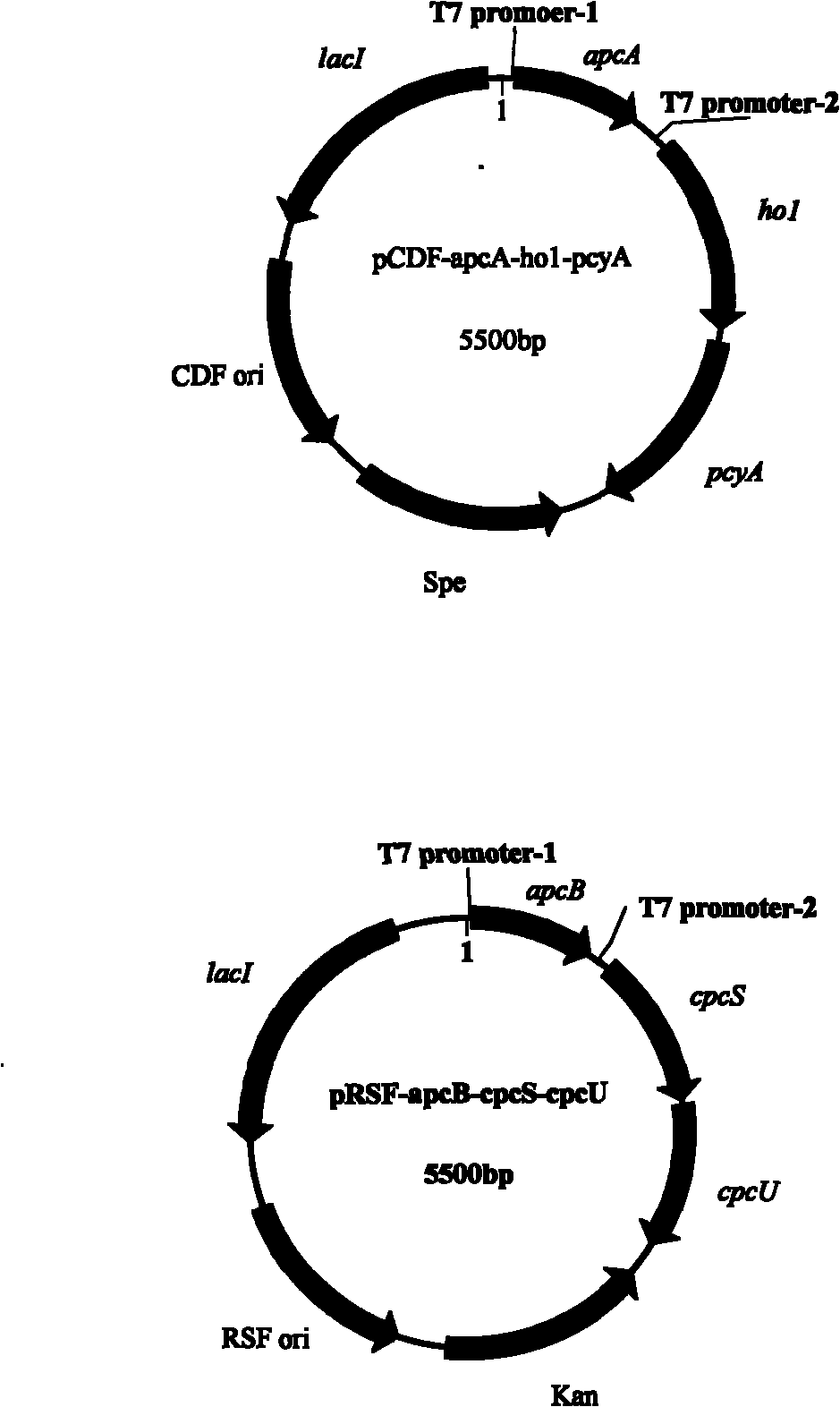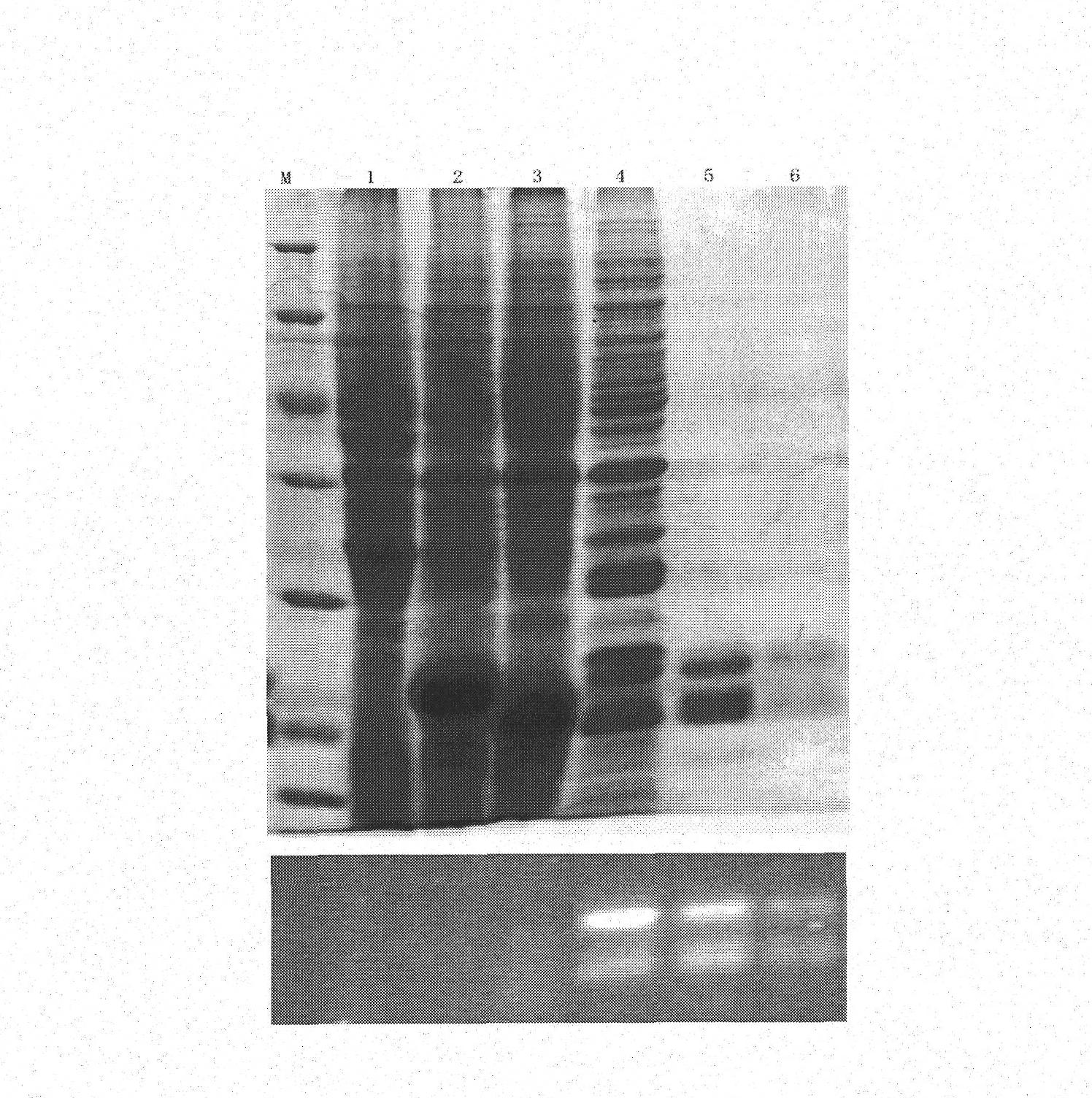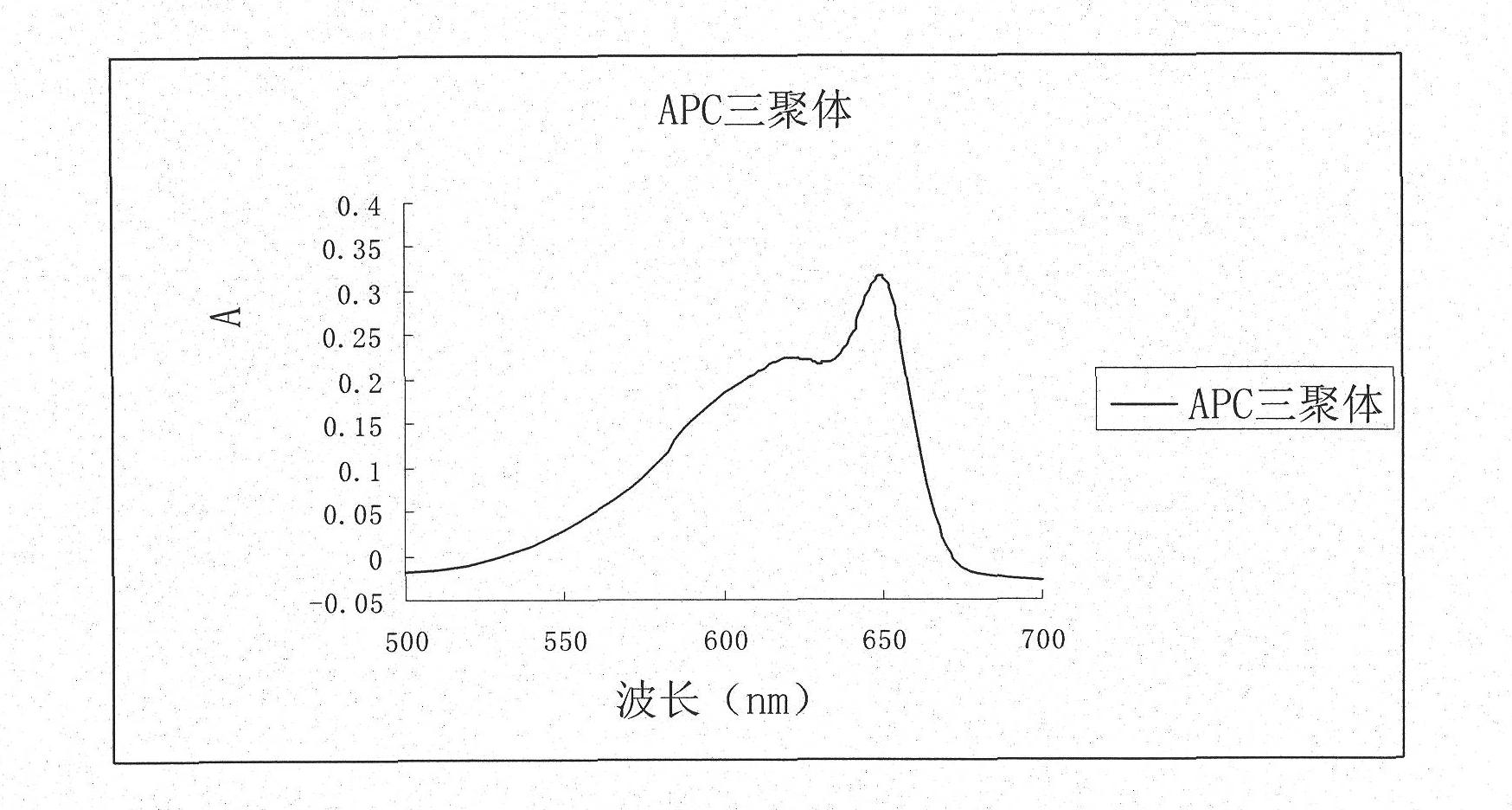Method for preparing allophycocyanin tripolymer fluorescent protein
A technology for allophycocyanin and fluorescent protein is applied in the field of preparing allophycocyanin trimer fluorescent protein, which can solve the problems of poor water solubility and stability of recombinant fluorescent phycocyanin, low fluorescence intensity, unfavorable development and research, etc. To achieve the effect of excellent fluorescence properties, high purity and easy cultivation
- Summary
- Abstract
- Description
- Claims
- Application Information
AI Technical Summary
Problems solved by technology
Method used
Image
Examples
Embodiment Construction
[0018] The present invention is specifically illustrated by the following examples:
[0020] From the National Center for Biotechnology Information (NCBI) database ( http: / / www.ncbi.nlm.nih.gov / ) to obtain the sequences of the apcA, apcB, cpcS, cpcU, ho1, pcyA genes of Synechocystis sp.PCC6803, thereby designing primers (see Table 1) for respectively constructing apcA, apcB, cpcS, cpcU, ho1 or pcyA gene fragments, and then using Synechocystis Genomic DNA of sp.PCC6803 was used as a template, and the corresponding primers designed to construct different gene fragments were used for PCR amplification, and apcA, apcB, cpcS, cpcU, ho1 or pcyAPCR products were respectively cloned. The PCR reaction system is 14.4 μl of double distilled water, containing Mg 2+ Buffer 20 μl, dNTP 4 μl, primer (forward) 1 μl, primer (reverse) 1 μl, Taq enzyme 0.2 μl, Synechocystis sp. PCC 6803 genome 1 μl.
[0021] The PCR reaction conditions adopted for the clone apcA, ap...
PUM
 Login to View More
Login to View More Abstract
Description
Claims
Application Information
 Login to View More
Login to View More - R&D
- Intellectual Property
- Life Sciences
- Materials
- Tech Scout
- Unparalleled Data Quality
- Higher Quality Content
- 60% Fewer Hallucinations
Browse by: Latest US Patents, China's latest patents, Technical Efficacy Thesaurus, Application Domain, Technology Topic, Popular Technical Reports.
© 2025 PatSnap. All rights reserved.Legal|Privacy policy|Modern Slavery Act Transparency Statement|Sitemap|About US| Contact US: help@patsnap.com



